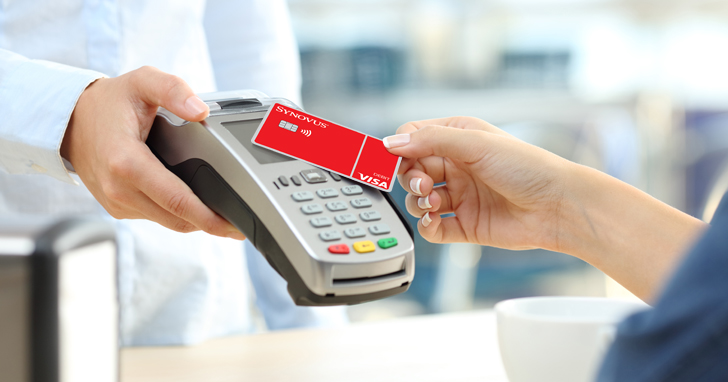Learn
What You Should Know About Contactless Payments

You may have been hearing a lot about "contactless" payments, which allow you to pay with your smartphone (also known as a mobile wallet) or with a debit card without having to touch a keypad or sign for anything.
 The less we interact with people, the safer we feel. With contactless payments, you don't hand over your card, use a touchpad, or sign a receipt.
The less we interact with people, the safer we feel. With contactless payments, you don't hand over your card, use a touchpad, or sign a receipt.
What Are Contactless Payments?
Most contactless payments take one of two forms. One is when you use your smartphone or smartwatch to pay for a purchase — no card needed — through mobile payment apps such as Apple Pay, Google Pay, or Samsung Pay.
The other is when you use a contactless enabled debit card or credit card that you hold near the card reader. Both methods use the same Near Field Communication (NFC) technology that allows you to simply tap your device or card at a checkout terminal to pay.
The term "contactless" means that you don't need to swipe or insert your card into a card reader. Instead, you can "tap to pay" at the point-of-sale (POS) terminal in stores or restaurants that accept payments through NFC technology. This means you just need to hover your card or device near the terminal for it to accept the payment data.
What Are the Benefits of Contactless Payments?
Contactless payments are convenient, especially if you pay using a smartphone. Many people carry their primary device with them regularly, and you don't have fumble around in your wallet looking for the right card to pay with.
They can also save time since you don't need to wait to sign unless you have charged over the acceptable limit. (Each store might have their own rules.)
How Do I Know If My Payment Card Is Contactless Enabled?
Look for the contactless symbol ![]() on either the front or back of your card. Cards that are compatible with contactless terminals will have a series of four nested curved lines on it, sort of like a Wi-Fi symbol but sideways.
on either the front or back of your card. Cards that are compatible with contactless terminals will have a series of four nested curved lines on it, sort of like a Wi-Fi symbol but sideways.
Are Contactless Payments Secure?
Contactless payments use a secure technology, similar to your chip card. Each time you tap-to-pay, a unique one-time code is generated for that transaction.1 While the data is transmitted wirelessly, it's encrypted, so only the card reader can read it.2 This makes it difficult, if not impossible, for an attacker to steal your credit card details if you use tap-to-pay.
And don't worry that you might inadvertently pay for something just by walking past a check-out terminal; you have to put your card or device within one to two inches of the terminal to trigger a transaction.
Which Is Better: A Mobile Payment or Contactless Card Payment?
Many people confuse the two types of contactless payments. The difference is that contactless mobile payments use a device, such as your smartphone or smartwatch, while contactless card payments require the use of a physical card.
The decision about which one to use is simply a matter of choice and convenience. If you prefer using a physical card rather than adding payment data to your phone, a card might be better. If you choose to use your phone, keep in mind that some brands might also integrate your loyalty card with your mobile wallet, making it that much easier to collect rewards.
Where I Can Use Contactless Payment Methods?
Wondering if your retailer has contactless payment capabilities? For Tap to Pay, just look for the contactless symbol ![]() on the payment terminal — the same symbol that you'll find on your contactless-enabled card.
on the payment terminal — the same symbol that you'll find on your contactless-enabled card.
For mobile payments, look to see if the payment terminal features your app's brand symbol (such as Apple Pay). Usually you will see a sticker that mentions the types of payments that are accepted. Or you can always ask an associate.
Contactless payments are a safe and secure way to make purchases. Contact your bank to learn more about how this type of card can work for you. Check out the Synovus contactless card and see if it is right for you.
Important disclosure information
This content is general in nature and does not constitute legal, tax, accounting, financial or investment advice. You are encouraged to consult with competent legal, tax, accounting, financial or investment professionals based on your specific circumstances. We do not make any warranties as to accuracy or completeness of this information, do not endorse any third-party companies, products, or services described here, and take no liability for your use of this information.
Do you have questions or ideas?
Share your thoughts about this article or suggest a topic for a new one
